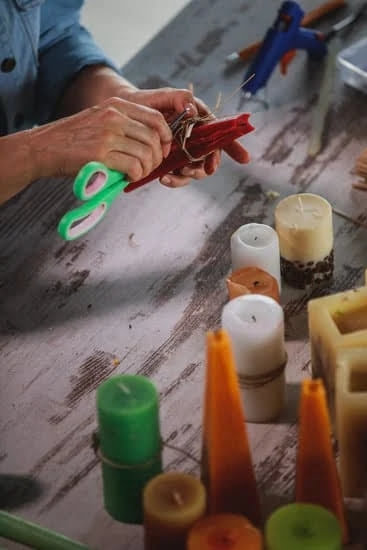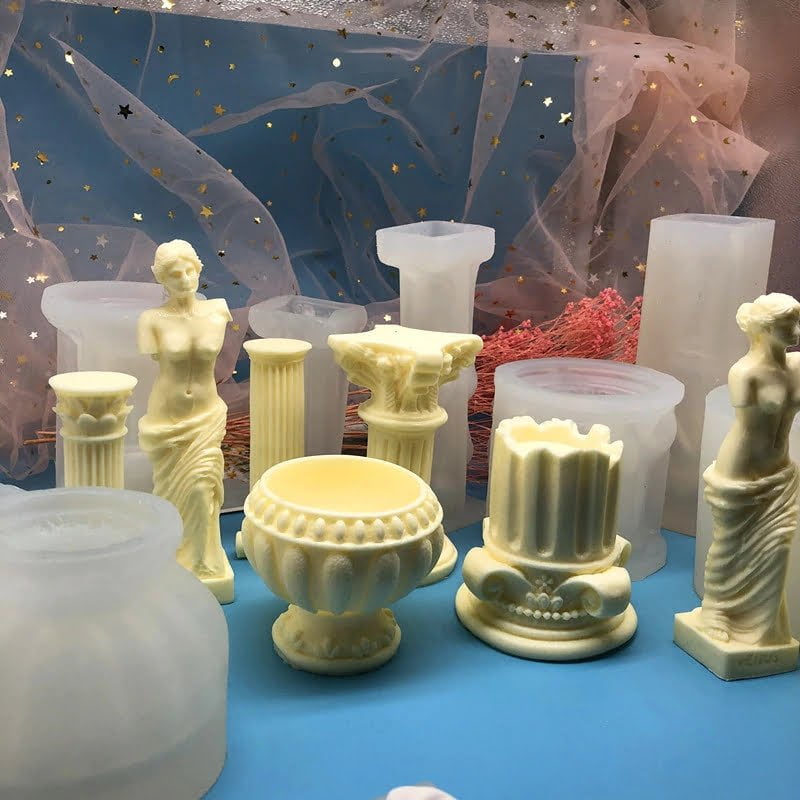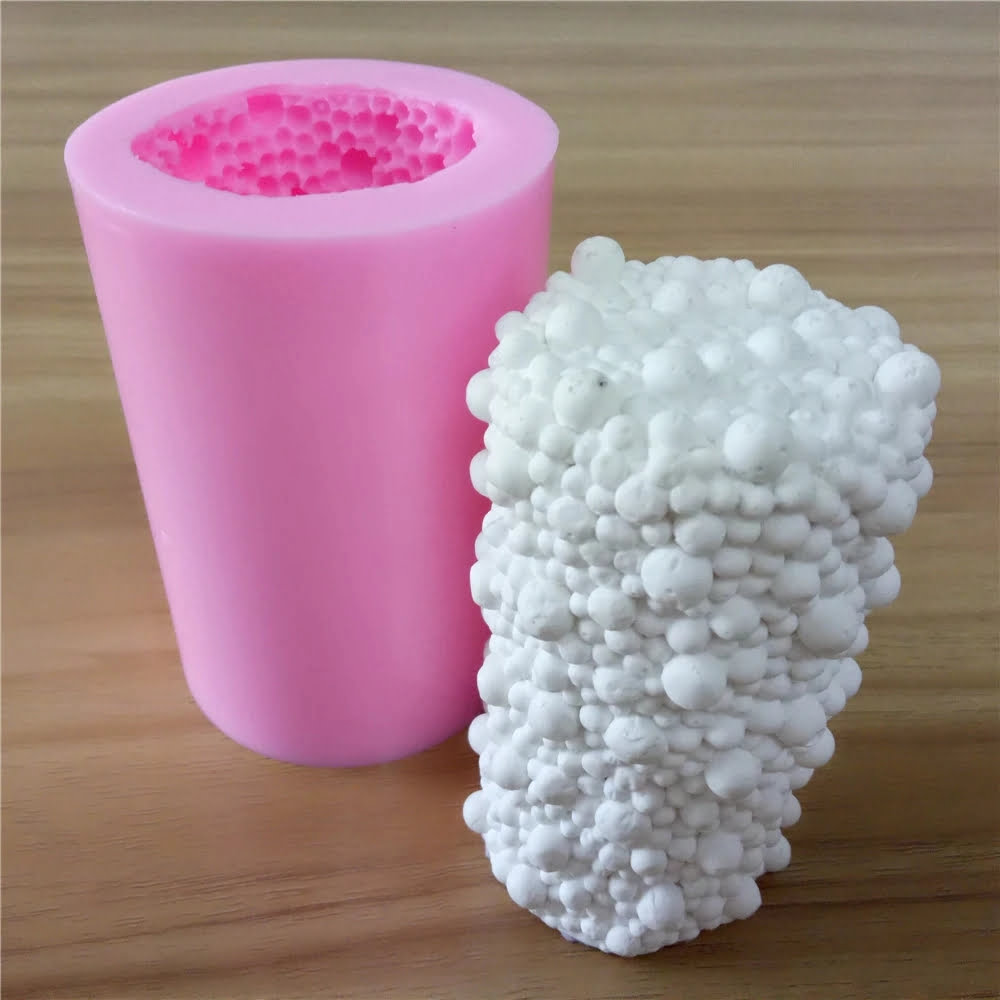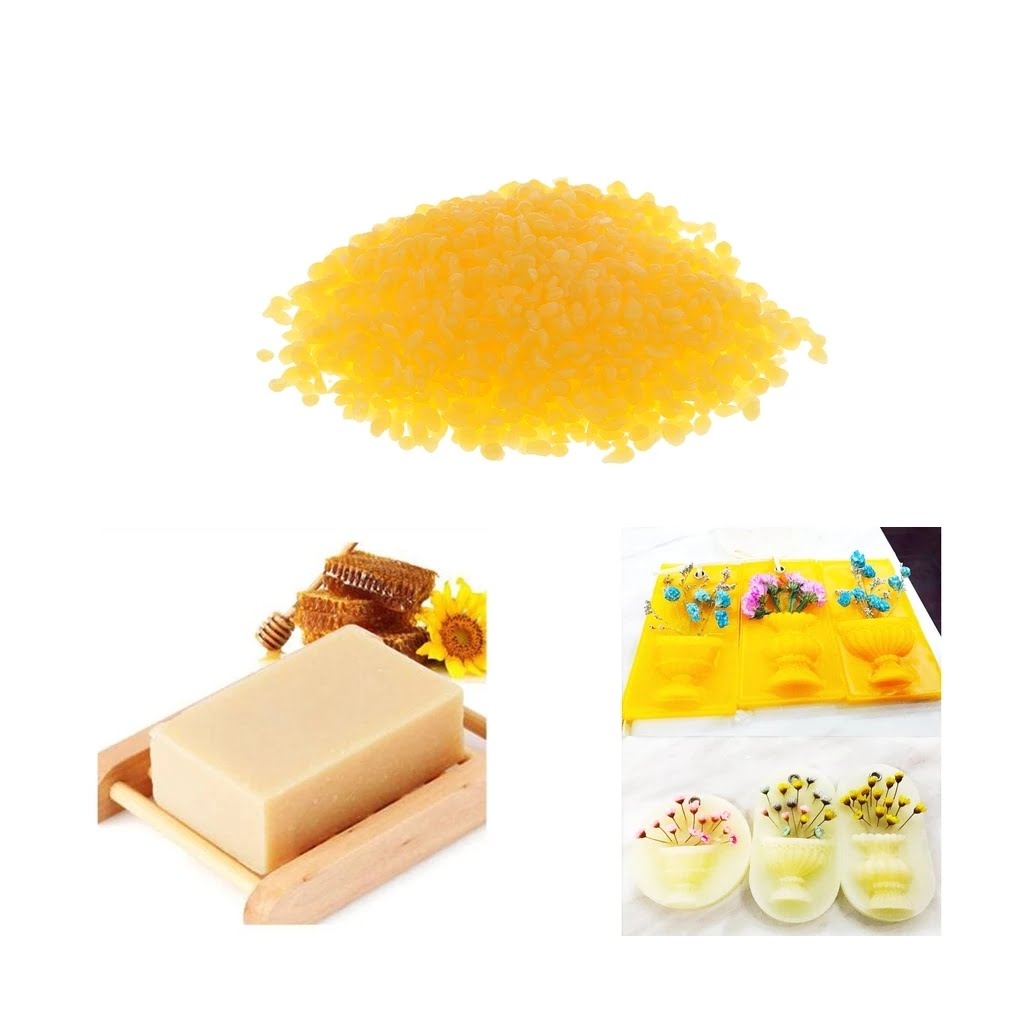Sinkholes can be a frequent frustration for candle makers, causing unsightly imperfections in an otherwise beautiful creation. Understanding the causes and learning how to prevent them is essential for achieving high-quality candles.
In this article, we will explore the various factors that contribute to sinkholes in candle making and provide practical tips for preventing their occurrence. From the impact of temperature to proper pouring techniques, choosing the right wick, and selecting high-quality wax, we will cover all aspects of sinkhole prevention.
When it comes to candle making, sinkholes are depressions or holes that form in the center as the candle cools. This issue is commonly caused by several factors including temperature fluctuations during the cooling process, improper pouring techniques, using the wrong wick size, poor quality wax, and the presence of air bubbles. By understanding these underlying causes and learning how to address each one effectively, you can significantly reduce the likelihood of sinkholes in your homemade candles.
Throughout this article, we will delve into detailed explanations of how temperature affects sinkholes and provide valuable insights into maintaining optimal conditions during the candle making process. Additionally, we will discuss the importance of proper pouring techniques and offer a step-by-step guide to prevent sinkholes at this crucial stage.
By following our recommendations for choosing the right wick size and quality wax along with preventing air bubbles in your candles, you can ensure a smoother candle-making experience and minimize the risk of sinkholes ruining your creations.
How Temperature Affects Sinkholes
When it comes to candle making, temperature plays a crucial role in the prevention of sinkholes. Sinkholes are depressions or holes that can form on the surface of a candle during the cooling process, resulting in an unattractive and uneven finish. Understanding how temperature affects sinkholes is essential for any candle maker who wants to produce high-quality candles consistently.
The temperature at which you melt and pour your wax can significantly impact the likelihood of sinkholes forming in your candles. If the wax is too hot when poured into the container, it can create air pockets as it cools, leading to sinkholes. On the other hand, if the wax is not hot enough, it may not fill the container evenly, resulting in a lumpy appearance.
To prevent sinkholes caused by temperature issues, it’s important to use a thermometer to monitor the temperature of your wax throughout the melting and pouring process. Different types of wax have specific optimal pouring temperatures, so be sure to check the guidelines for the specific wax you are using. Additionally, controlling the ambient temperature of your workspace can also help ensure that your candles cool uniformly and minimize sinkhole formation.
Moreover, maintaining a consistent temperature in both the wax and the environment where candles are being made is crucial for preventing sinkholes. Any fluctuations in temperature during the cooling process can lead to imperfections in your candles. By being mindful of temperature at every stage of candle making and implementing proper techniques, you can minimize the risk of encountering sinkholes in your finished products.
| Temperature-Related Tips | Benefits |
|---|---|
| Use a thermometer to monitor wax temperature | Prevents overheating or underheating during pouring process |
| Maintain consistent ambient temperature | Helps ensure uniform cooling of candles |
| Refer to pouring guidelines for specific wax types | Ensures proper pouring temperatures according to wax specifications |
Importance of Proper Pouring Techniques
Overview of the Impact of Pouring Techniques on Sinkholes
Proper pouring techniques play a crucial role in preventing sinkholes in candle making. Sinkholes are indentations that can form on the surface of a candle as it cools, and they are often caused by improper pouring methods. When wax is poured at the wrong temperature or too quickly, it can result in air becoming trapped within the candle, leading to the formation of sinkholes.
Additionally, inadequate pouring techniques can cause uneven cooling, which also contributes to sinkhole formation. Understanding the impact of pouring techniques is essential for any candle maker who wants to produce high-quality candles.
Step-by-Step Guide to Prevent Sinkholes During the Pouring Process
To prevent sinkholes from forming during the pouring process, it’s important to follow specific steps that can help maintain the integrity of the candle’s surface. Firstly, ensure that you are pouring the wax at the correct temperature. Different types of waxes have varying ideal pour temperatures, so be sure to consult guidelines specific to your chosen wax type.
Slow and steady pouring is also essential for allowing air to escape and reducing the likelihood of creating air pockets within the candle. Additionally, consider using a heat gun or gentle heating method after pouring to eliminate any potential air bubbles that could lead to sinkholes as the wax solidifies. By following these step-by-step measures, candle makers can significantly reduce the occurrence of sinkholes in their finished products.
Choosing Quality Molds
Another key factor in proper pouring techniques is selecting high-quality molds for your candles. The type of mold used can impact how evenly and smoothly wax is distributed during the pouring process. Non-porous and smooth molds are preferable as they promote an even distribution of wax and minimize any potential imperfections on the surface of the candle.
It’s important to inspect your molds regularly for any damage or wear and tear that could affect their performance during candle making. By choosing quality molds and maintaining them properly, you can further prevent sinkholes from forming due to issues with pouring techniques.
Choosing the Right Wick
The choice of wick plays a crucial role in preventing sinkholes in candle making. When selecting a wick for your candles, it’s essential to consider factors such as the type of wax being used, the diameter of the candle, and the desired burn time. By choosing the right wick, you can effectively minimize the occurrence of sinkholes and ensure that your candles burn evenly and cleanly.
One key consideration when choosing a wick is the size of the candle. For larger diameter candles, it’s important to select a thicker wick that can create a wider melt pool. This helps to prevent tunneling, which can lead to sinkholes in the center of the candle. Conversely, smaller diameter candles require a thinner wick to avoid an oversized melt pool that could also result in sinkholes.
In addition to considering candle size, it’s crucial to match the wick type with the specific wax being used. Different waxes have unique burning properties, so selecting a wick that complements the characteristics of your chosen wax is vital for preventing sinkholes. For example, soy wax typically requires a different type of wick compared to paraffin wax due to their varying melting points and compositions.
| Factor | Consideration |
|---|---|
| Candle Size | Choose thicker wicks for larger diameter candles and thinner wicks for smaller ones |
| Wax Type | Select a wick that complements the burning properties of your specific wax |
Quality of Wax Matters
The quality of wax used in candle making plays a crucial role in preventing the occurrence of sinkholes. When low-quality wax is used, it can lead to an increased likelihood of sinkholes forming in the finished candles. To ensure that sinkholes are minimized, if not entirely prevented, it is important to carefully select the wax for your candle making projects.
Factors to consider when choosing the right wax for candle making:
- Type of Wax: There are different types of wax available for candle making, including paraffin, soy, beeswax, and more. Each type has its own unique properties that can impact the formation of sinkholes.
- Purity: Look for waxes that are specifically designed for high-quality candles. Pure and clean waxes are less likely to contribute to sinkhole formation.
- Additives: Some waxes come with additives that can help prevent sinkholes and improve the overall quality of the candles. Consider using these types of waxes for a better end result.
- Melting Point: The melting point of the wax can affect how it behaves during the pouring and cooling process. Choosing a wax with a suitable melting point can help prevent sinkholes.
By paying attention to the quality of wax used in your candle making endeavors, you can significantly reduce the risk of sinkholes forming in your finished products. Investing in high-quality wax will ultimately lead to higher quality candles that are less prone to imperfections like sinkholes.
Additionally, ensuring proper storage and handling of your wax supplies is essential for maintaining their quality. Storing wax away from heat and light can help preserve its integrity and reduce the likelihood of experiencing issues like sinkholes during candle making projects. Following these tips for selecting and caring for your wax will go a long way in preventing sinkholes in your candles and producing superior end results.
Preventing Air Bubbles in Candles
Understanding the Role of Air Bubbles
Air bubbles are a common culprit when it comes to the formation of sinkholes in candles. When air becomes trapped within the wax during the pouring process, it can create cavities or voids within the candle, leading to sinkholes once the wax has cooled and solidified. Understanding how air bubbles contribute to sinkholes is essential for preventing these imperfections in your candles.
To prevent air bubbles from forming, it’s important to carefully monitor the temperature of your melted wax and avoid agitating it excessively during the pouring process. Additionally, using a high-quality wax that is specifically designed for candle making can help reduce the likelihood of air bubble formation.
Techniques for Eliminating Air Bubbles
There are several techniques that can be employed to eliminate air bubbles during the candle making process. One effective method is to preheat your container before pouring in the wax, which can help minimize air entrapment. Additionally, gently tapping or vibrating the container after pouring can help dislodge any small air bubbles that may have formed.
Another technique for preventing air bubbles involves using a heat gun or hairdryer to carefully warm the surface of the newly poured candle. This can help release any trapped air and create a more uniform appearance in your finished product. By incorporating these techniques into your candle making process, you can significantly reduce the risk of air bubble-related sinkholes in your candles.
Using Quality Materials
In addition to implementing specific techniques for eliminating air bubbles, ensuring that you use high-quality materials is crucial for preventing these imperfections in candles. Opting for premium waxes and fragrance oils that have been formulated specifically for use in candle making can help minimize issues related to air bubble formation.
Likewise, choosing top-quality containers and wicks can also contribute to creating a smooth, uniform surface in your finished candles, ultimately reducing the likelihood of sinkholes caused by air pockets.
By paying close attention to both your technique and material selection, you can effectively prevent sinkholes resulting from air bubble formation in your candles.
Maintenance and Storage Tips
Proper care and storage of finished candles is essential to prevent the occurrence of sinkholes. Here are some tips to help maintain the quality and integrity of your candles over time:
- Keep candles away from direct sunlight: Exposing candles to direct sunlight can cause them to soften or melt, leading to potential sinkholes. Store your finished candles in a cool, dark place to maintain their shape and consistency.
- Store candles in airtight containers: Moisture in the air can affect the quality of the wax and result in sinkholes. To prevent this, store your finished candles in airtight containers or plastic bags to keep them dry and free from any potential damage.
- Avoid extreme temperature changes: Fluctuations in temperature can cause the wax to expand and contract, potentially leading to sinkholes. It’s important to store your candles in an environment with consistent temperature levels to prevent any unwanted changes in the wax.
Applying these maintenance and storage tips will help ensure that your finished candles remain free from sinkholes and maintain their quality for longer periods.
Remember, prevention is key when it comes to avoiding sinkholes in candle making. By taking proper care of your finished products, you can minimize the risk of encountering sinkhole issues down the line.
Troubleshooting Sinkholes
Despite taking all the necessary precautions, sinkholes can still occur in candles during the making process. It’s important to understand that even with proper temperature control, pouring techniques, wick selection, and high-quality wax, there may still be instances where sinkholes develop. In this section, we will explore common issues that can lead to sinkholes despite preventative measures and provide strategies for addressing sinkholes if they do occur in your candles.
One common issue that can lead to sinkholes is uneven cooling. Even when the candle appears to have cooled uniformly, there may be pockets of heat trapped within the wax, causing sinkholes to develop as the candle continues to cool. To address this issue, it’s important to allow candles to cool at room temperature in a draft-free environment. Additionally, rotating the candles during the cooling process can help distribute heat evenly and prevent sinkholes from forming.
Another potential cause of sinkholes is inadequate curing time. After pouring the wax and allowing it to cool, it’s essential to give the candles sufficient time to cure before burning them. If candles are burned too soon after making them, air pockets may form within the wax and result in sinkholes once the candle is lit. By ensuring that your candles are properly cured before use, you can minimize the risk of developing sinkholes.
In some cases, using fragrance oils or dyes that are not compatible with the chosen wax may also contribute to sinkhole formation. Certain additives can alter the composition of the wax and lead to irregular cooling or air pocket formation within the candle.
To troubleshoot this issue, it’s important to carefully review and select compatible fragrance oils and dyes for your specific type of wax. Additionally, adjusting the ratio of additives used in future batches of candles can help prevent sinkholes from forming.
Conclusion
In conclusion, preventing sinkholes in candle making is crucial for producing high-quality, visually appealing candles. By understanding the causes of sinkholes and implementing the right preventive measures, candle makers can ensure a smooth and attractive finish to their products. Throughout this article, we have discussed the various factors that contribute to sinkholes, such as temperature, pouring techniques, wick selection, wax quality, air bubbles, and maintenance.
For those looking to prevent sinkholes in their candle making process, it is important to pay close attention to temperature control during the melting and pouring stages. Maintaining the right temperature for your wax is essential for achieving a smooth finish without imperfections. Additionally, mastering proper pouring techniques and selecting the appropriate wick for your candles are equally important steps in preventing sinkholes.
Choosing high-quality wax and ensuring a bubble-free environment during the candle-making process are also effective ways to prevent sinkholes. Lastly, storing finished candles properly and troubleshooting any issues that may arise despite preventive measures will contribute to successful candle making endeavors. By applying these tips and techniques consistently, candle makers can minimize the occurrence of sinkholes and produce beautiful, flawless candles every time.
Frequently Asked Questions
Why Do I Keep Getting Sink Holes in My Candles?
Sink holes in candles can be caused by several factors, including pouring the wax at too low of a temperature, not properly heating the container beforehand, or not using the right type of wick. It’s important to make sure that the wax is poured at the correct temperature and that any air bubbles are removed before it sets.
How Do You Make Candles Without Sinkholes?
To make candles without sinkholes, it’s important to ensure that all components are at the appropriate temperature before pouring, use the right size and type of wick for the container and wax being used, and to avoid moving the candle while it’s setting.
Properly warming the container and slowly pouring the wax can also help prevent sinkholes from forming.
How Do You Fix a Sinkhole in a Homemade Candle?
Fixing a sinkhole in a homemade candle can be done by melting additional wax and carefully pouring it into the sunken area. It’s important to let this new layer of wax cool and set before relighting the candle.
Additionally, using a heat gun or hair dryer to gently warm the surface of a sinkhole can help smooth out any imperfections in the candle’s appearance.

Welcome to my candle making blog! In this blog, I will be sharing my tips and tricks for making candles. I will also be sharing some of my favorite recipes.





